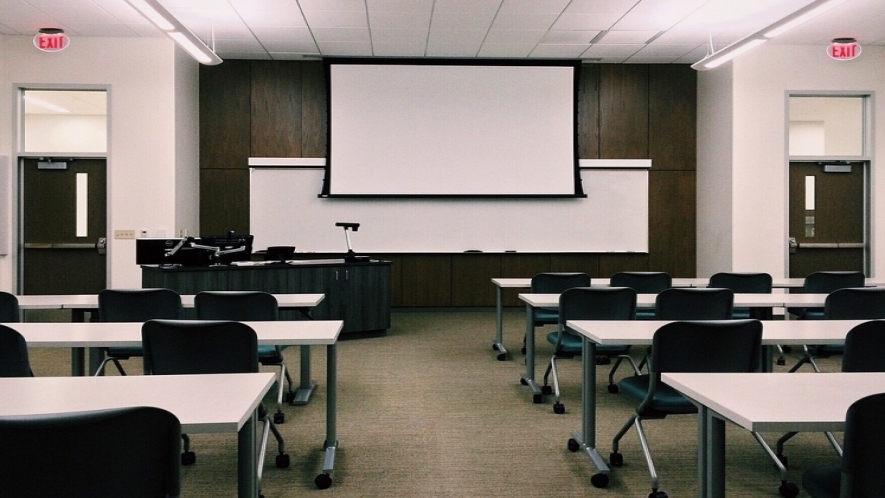
Instructors have the option to choose from a variety of teaching techniques, strategies, methods, and even theories. The approach used will depend on the discipline, type of course (lab, recitation, etc.), and the instructor’s personal teaching philosophy. Regardless, varying instructional methods is often desirable, because different students learn in different ways and some material is more amenable to one approach than another. In this article, we overview a selection of teaching techniques, strategies, and methods based on what is most effective in different classroom contexts.
Learning vs. Teaching
Often, instructors begin planning for a course by focusing on the teaching aspect, but what if instructors began with focusing on student learning? This article, Focusing on Learning Instead of Teaching, addresses how this shift can impact one’s teaching practice. Take it a step further by reading this article on the seven principles of learning. Finally, this article, How to Facilitate Learning, provides tips and ideas for how to focus the classroom environment and teaching on student learning.
For more on learning, see the Teaching Commons Teaching Essentials, Engaged Learning and Student Learning.
Lecturing
One venerable form of instruction in universities is the lecture. While it is still one of the most widely used teaching techniques, many experts doubt that lecturing is the most effective technique when used as the only method of content delivery.
Lecturing can be a useful way of conveying new information or of explaining difficult concepts and analytical techniques, regardless of course modality. Successful lecturing depends on good organizational and public speaking skills. It may even demand a certain amount of showmanship to be effective.
Even the best students will occasionally miss crucial components of a long lecture. An outline on a board or screen can help students keep up with the lesson. To make lectures as effective as possible:
- Use headings that list the major points to be covered in the class. This is an invaluable aid to students in putting their notes in perspective and providing better sets of notes for study.
- Use underlining, capitals, and boxes to emphasize key statements, ideas, terms, or formulas.
- Be selective and stick to the basic ideas. Writing down everything usually obscures rather than clarifies.
- Reveal the points using presentation software as you progress through the class, so that students will listen to the discussion instead of simply copying the whole outline.
- Ensure that the outline is visible to all in the room.
- Coach students in effective note-taking in order to help them develop their study skills.
Using Media
Audio or video recordings can be an effective part of instruction. Viewing a relevant segment of a video followed by a discussion can be a very effective teaching technique. The Media Library has a large collection of materials.
Writing Assignments
Writing assignments are an important means for determining whether students understand course material. However, instructors who use writing assignments must be willing to make a commitment to effective grading. These assignments will not have much value to the student unless instructors provide meaningful feedback that can lead to improvement.
Collaborative Learning
We use collaborative learning to broadly refer to group learning, peer learning, team learning, and any kind of learning experience that involves students learning from one another. This article, What is Collaborative Learning, provides definitions, steps for building collaborative learning experiences, and additional resources. Classroom discussion is a part of building a collaborative learning environment. For more on facilitating classroom discussions, see this guide.
For instructors who teach online, this article, Enhancing Community in the Online Course, has tips on promoting collaborative learning in the online classroom.
Experiential Learning
Experiential learning involves students working with concrete experiences. Students can use these experiences to make their learning more relevant to their lives and connect emotionally to the content. Examples of experiential learning include engaging in games and role plays, debates, and simulations; participating in community engagement and service projects, etc. The Teaching Commons tag, Experiential Learning, provides examples and ideas for planning an experiential learning experience.
Gauging Teaching Effectiveness
Reappointment to most teaching positions requires demonstrated teaching effectiveness. To demonstrate (and improve) skill in the classroom, an instructor might consider inviting an established member of the regular faculty to observe a class. Keeping student evaluations and other proof of skill in the classroom (such as notes or e-mails from class observers and students) in a file is a good way to build a teaching portfolio.
Additionally, rather than waiting until the end of the semester for student feedback on teaching, an instructor might give students the opportunity to provide feedback at the midpoint in the semester by conducting a “mini” teaching evaluation.

